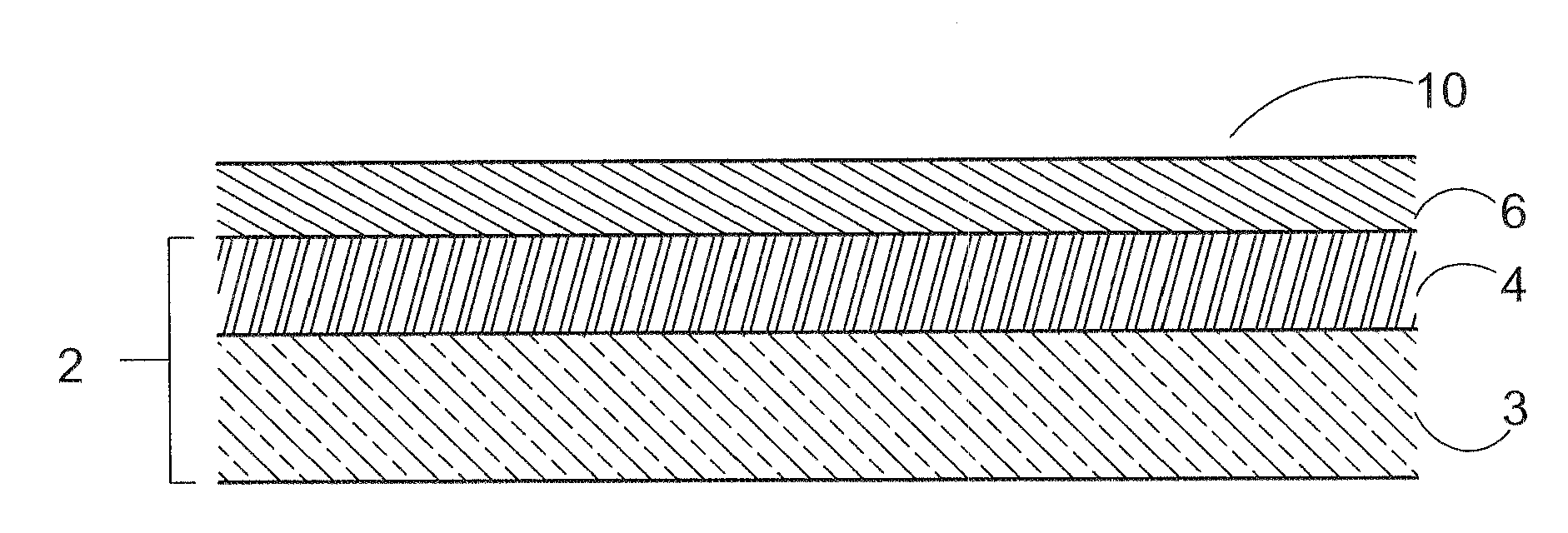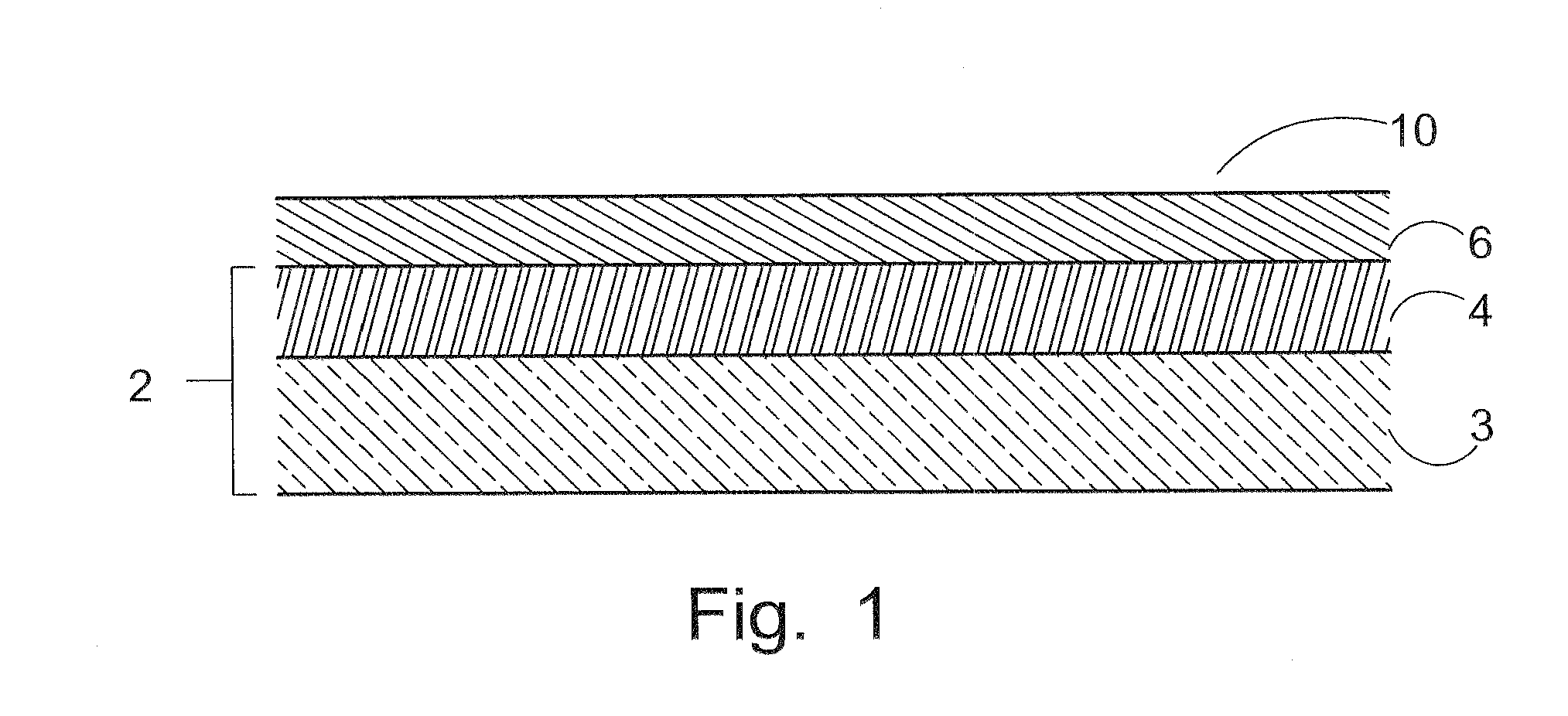Polyester film with adhesive properties
a polyester film and adhesive technology, applied in the field of polymeric films with adhesive properties, can solve the problems of poor adhesion characteristics of polyester films, insufficient adhesion of dye directly deposited onto polyester films, and insufficient corona treatment methods. achieve the effect of improving adhesion, reducing the shifting of the ink layer, and superior imaging results
- Summary
- Abstract
- Description
- Claims
- Application Information
AI Technical Summary
Benefits of technology
Problems solved by technology
Method used
Image
Examples
example 1
[0064]A mixture with composition of 0.2 parts by weight of 2.6 μm average diameter silica oxide particles (Silicia 310 by Fuji-silica), and 100 parts by weight 0.65 inherent viscosity polyethylene terephthalate was supplied to an extruder and melt compounded at 280° C. (536° F.). A molten polymer sheet was cast on a rotating cooling drum having a temperature of 21° C. (70° F.) to prepare non-stretched film. The thus obtained non-stretched film was introduced into a plurality of heated rolls and stretched at a draw ratio of 6.0 times at 121° C. (250° F.) in a longitudinal stretching process. Then, an adhesive coating solution of the composition of components A-D as shown in Table 1 was applied on one side of the uniaxially oriented film. This coated film was led into a tenter which grasps both end positions of film by clips, and therein the coating solution was dried and the film was preheated at a temperature of 100° C. (212° F.). Then the film was stretched in the transverse direct...
PUM
| Property | Measurement | Unit |
|---|---|---|
| thickness | aaaaa | aaaaa |
| thickness | aaaaa | aaaaa |
| glass transition temperature | aaaaa | aaaaa |
Abstract
Description
Claims
Application Information
 Login to View More
Login to View More - R&D
- Intellectual Property
- Life Sciences
- Materials
- Tech Scout
- Unparalleled Data Quality
- Higher Quality Content
- 60% Fewer Hallucinations
Browse by: Latest US Patents, China's latest patents, Technical Efficacy Thesaurus, Application Domain, Technology Topic, Popular Technical Reports.
© 2025 PatSnap. All rights reserved.Legal|Privacy policy|Modern Slavery Act Transparency Statement|Sitemap|About US| Contact US: help@patsnap.com


